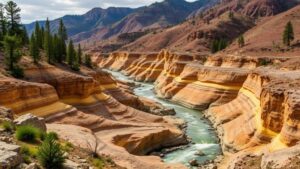How to Use Clay Deposits as Indicators of Gold-Bearing Zones
How to Use Clay Deposits as Indicators of Gold-Bearing Zones
The exploration for gold remains a critical endeavor within geoscience and mining industries. Among various geological indicators, clay deposits have emerged as significant markers for identifying potential gold-bearing zones. Understanding the properties and formation processes of clay can enhance the efficacy of gold exploration strategies. This article delves into the relationship between clay deposits and gold, providing a comprehensive overview of how to utilize these geological features as exploration tools.
The Geology of Clay Deposits
Clay deposits are formed from the weathering of igneous, metamorphic, and sedimentary rocks. Composed of fine-grained minerals, clays exhibit diverse physical and chemical properties. When considering their role in gold exploration, it is essential to understand these characteristics:
- Particle Size: Clay particles are smaller than 2 micrometers in diameter, allowing them to enlarge superficial mineral deposits by trapping moisture and organic materials.
- Cation Exchange Capacity (CEC): The ability of clay to hold cations on its surface aids in its interaction with metal ions, including gold.
- Mineral Composition: Certain clay minerals (e.g., kaolinite, illite) can indicate the geological conditions that favor gold mineralization.
Clay Deposits and Gold Mineralization
Several mechanisms link clay deposits to gold-bearing zones. One significant relationship is their occurrence in hydrothermal environments, where gold deposits are often formed due to the alteration of surrounding rocks by hot fluids. Clays can signal these hydrothermal systems:
- Alteration Patterns: The presence of certain clay minerals, such as smectite or kaolinite, hints at the temperature and chemistry of the fluids involved in mineral alteration, which may be conducive to gold deposition.
- Topography and Erosion: Gold, being denser than other minerals, can become concentrated in riverbeds and lag deposits due to erosion, often found in tandem with clay deposits on valley floors or near stream channels.
Case Studies of Clay Indicators in Gold Exploration
Several notable case studies illustrate the application of clay deposits in identifying gold-bearing zones:
- Muruntau Gold Mine, Uzbekistan: The significant clay alteration around the ore body has been critical in delineating new gold resources. Analyzing clay mineralogy assisted geologists in targeting drilling operations near these altered zones.
- Carlin Trend, Nevada: This prolific gold mining area features alterations where clays like illite have indicated rich deposits nearby. relationship between clay composition and gold presence facilitated efficient exploration strategies.
Methods for Analyzing Clay Deposits
To utilize clay deposits as indicators of potential gold zones effectively, various analytical techniques can be employed:
- Geochemical Sampling: Collecting and analyzing samples of clay for trace elements associated with gold mineralization can provide direct clues regarding potential gold-rich areas.
- X-Ray Diffraction (XRD): This technique helps in characterizing clay mineralogy, revealing the types of clays present and their suitability as exploration indicators.
- Remote Sensing: Satellites and airborne surveys can help identify clay-rich areas through spectral analysis, guiding ground investigations more efficiently.
Limitations and Considerations
While clay deposits are valuable indicators, certain limitations should be acknowledged:
- False Positives: Not all clay deposits indicate gold. Extensive exploration and verification are needed to confirm the presence of valuable minerals.
- Geological Variability: Regional geology can affect clay mineral formation, implying that local expertise is crucial when interpreting data.
Conclusion and Actionable Takeaways
In summary, clay deposits serve as important indicators in guiding the search for gold-bearing zones. By understanding their geological context, analyzing mineral composition, and employing modern analytical methods, exploration efforts can be streamlined significantly. For professionals in the field:
- Incorporate clay analysis into exploration programs to refine target areas.
- Stay informed on advancements in mineralogical techniques to enhance clay studies.
- Collaborate with geologists to ensure an in-depth understanding of local geology and its implications for gold prospecting.


